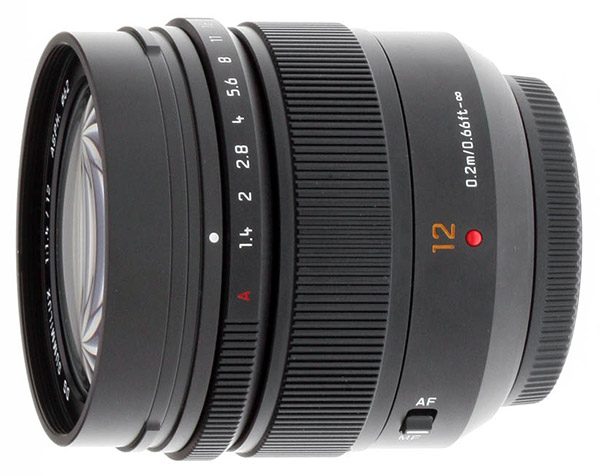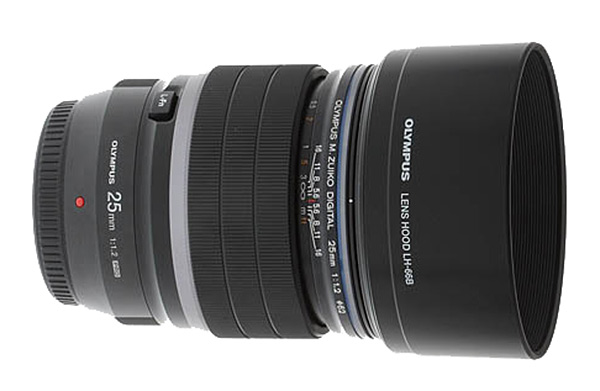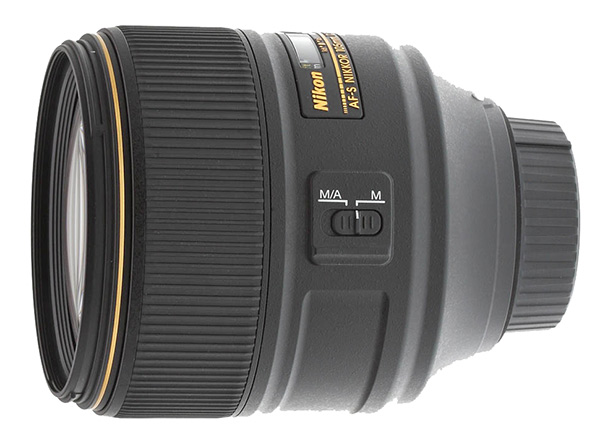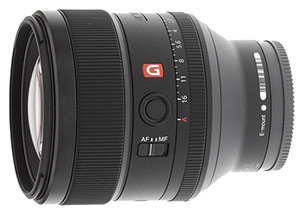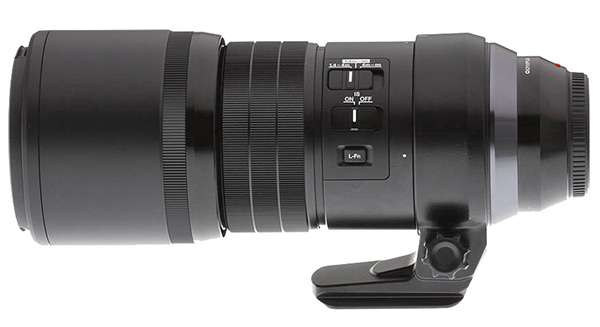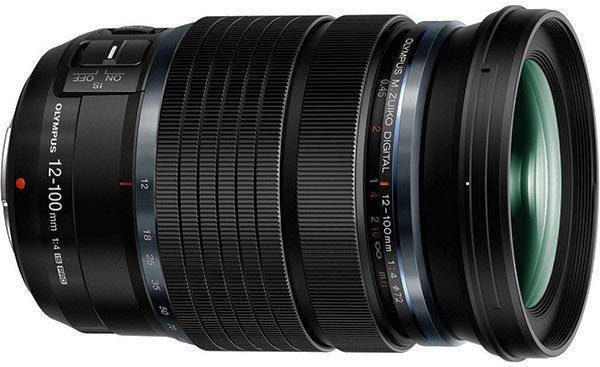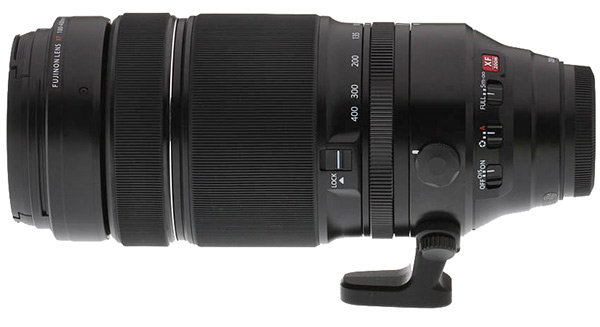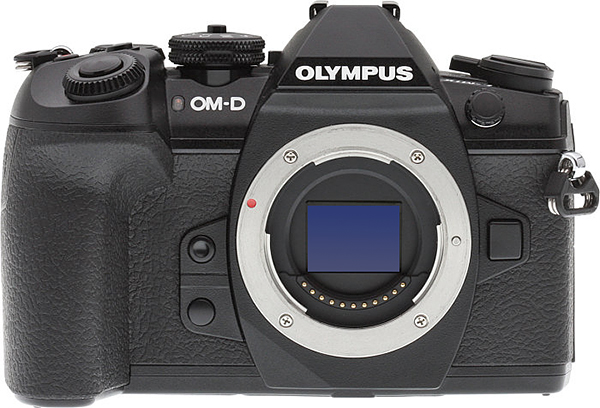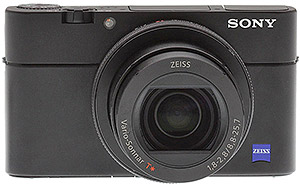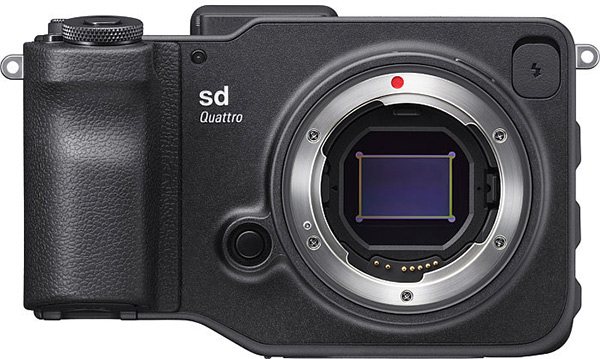Camera of the Year 2016: Best Prime and Zoom Lenses, Technology and more!
posted Wednesday, December 21, 2016 at 3:00 PM EDT
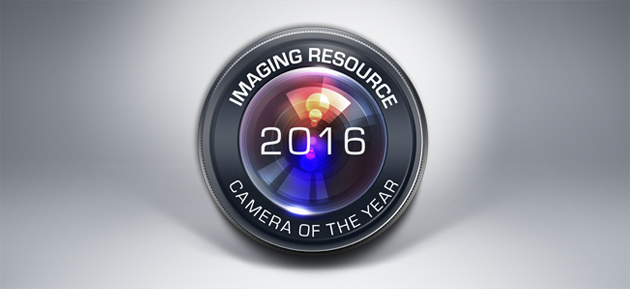
Cameras may come and cameras may go, but good lenses last a lifetime! Well, if we're lucky enough, they certainly might. We at IR are simply *crazy* about good lenses and decided to save the best for last here in our 2016 COTY awards.
Are you interested in a quality prime lens for a specific purpose? We have some absolutely terrific ones listed here. Or how about that perfect zoom for your chosen shooting needs? We have a high-caliber sampling of those for you here from 2016 as well. We look at the test results from our lab, the overall build quality, the innovations within, and the shooting experiences from our Field Testers, and then boil it down and select the best of the best for these awards.
If you've missed our additional Camera of the Year 2016 pages, links are provided at the bottom of this page, so make sure and circle back to find the right camera body to go along with any of these terrific lenses!
Lens of the Year, Best Wide Angle Prime:
Panasonic 12mm f/1.4
It was a great year for Micro Four Thirds shooters, and Panasonic’s 12mm f/1.4 is evidence to that fact. Relatively expensive by Micro Four Thirds standards, the 24mm equivalent ultra-fast prime lens nevertheless offers exquisite performance when used wide open at f/1.4 -- the primary reason you buy a lens like this.

Continuing their partnership with famed German optics company, Leica, Panasonic's 12mm f/1.4 lens follows a Summilux design and not only offers excellent sharpness wide open, but also very low CA, minimal vignetting, and very low distortion. In addition to the optical performance of the lens, it is built extremely well, with metal construction and weather sealing.
The Panasonic Leica 12mm f/1.4 is truly a pro lens, with design elements such as a very long throw range for manual focus, and an honest-to-goodness aperture ring. The marriage of old-school techniques to new-world features is seamless, as the camera automatically employs aids like a magnified focus area and focus peaking when the lens is manually focused. The Panasonic 12mm f/1.4 is a real pleasure to shoot with, and the resulting images are excellent.
Lens of the Year, Best Standard Prime:
Olympus 25mm f/1.2 Pro
The allure of the fast standard prime is alive and well, and has until recently been the sole purview of full-frame sensor camera manufacturers (the notable example being the Canon 50mm f/1.2). That changed this year with the introduction of the Olympus 25mm f/1.2 Pro, which offers extremely sharp performance, even at f/1.2, and weighs less than its contemporaries.

The lens is built with all the fixings that Olympus can bring to bear: all-metal construction with splash- and dust-proofing, an ingenious and effective manual focus solution, and a button on the lens with which to assign a custom function. Olympus has put a lot of effort into manual focusing as well: normally, the focusing ring on Micro Four Thirds lenses will turn forever, but when this lens is in manual focusing mode, hard stops at the close-focus and infinity-focus ends are engaged.
The Olympus 25mm f/1.2 is certainly more expensive than other Olympus prime lenses, but it doesn’t get any better than this, and it's destined to become one of those classic lenses that retains its value over the years.
Lens of the Year, Best Portrait Prime: Nikon 105mm f/1.4E
Innovations in lens technology have allowed for some incredible new designs: concepts that were deemed too costly or impractical become feasible, and the Nikon 105mm f/1.4E is a testament to those innovations.

The Nikon 105mm f/1.4E is the fastest 105mm prime lens developed at the time of this writing. It used to be an adage that to get the best performance out of a lens, you had to stop down, which defeated the purpose of using fast glass. Improvements in lens design have thrown that adage out the window, as the Nikon 105mm f/1.4E produces sharp, contrasty images right out of the gate at f/1.4. This is the lens you buy to use at f/1.4.
Nikon doesn’t go for metal lens designs much any more, but you probably wouldn’t want it in the case of this lens -- for a prime lens, it’s quite large. It’s also very expensive, but if you know you need a fast prime, you'll be hard-pressed to find a better alternative, and with the Nikon 105mm f/1.4 you more than get what you pay for.
Lens of Distinction, Portrait Prime: Sony 85mm f/1.4 GM
Sony E-mount users were unanimously overjoyed when Sony announced the launch of their new premium line of lenses, the G Master series, earlier this year. Of the trio of lenses announced at the time, the FE 85mm f/1.4 GM lens stood alone as uniquely appealing to portrait photographers. When the lens hit our lab over the summer for a full test, it thoroughly impressed us, thus earning our Lens of Distinction Portrait Prime award for 2016.

If not for the staggeringly good performance from the Nikon 105mm f/1.4 this fall, the Sony FE 85mm f/1.4 GM would’ve taken our Portrait Prime of the Year award due to its excellent sharpness, distortion control, lack of aberrations and rugged build quality. This first 85mm lens for FE-mount cameras is not only a fantastic lens, but it’s the beginning of an important new chapter for Sony. This professional-grade, premium and precisely-engineered Sony FE 85mm f/1.4 GM is superb and definitely deserving of honor.
Lens of the Year, Best Telephoto Prime:
Olympus 300mm f/4 IS Pro
Until the Olympus 300mm f/4 IS Pro debuted, there really wasn't a true professional-grade telephoto prime lens for sports, wildlife and bird MFT photographers. Offering a massive 600mm-equivalent focal length, but at a fraction of the size of its DSLR counterparts, the Olympus 300mm Pro lens is a stunning feat of optical engineering.

Like other Zuiko Pro lenses, the 300mm f/4 is fully weather sealed and excellently constructed. Autofocus is very quick, and its image quality is thoroughly impressive. Wide open, the lens is tack sharp across the entire frame and remains sharp if you need to stop down or even when you add the 1.4x teleconverter -- which, by the way, gives you an easily hand-holdable 840mm-equivalent lens! Try doing that with a DSLR.
It's also the first Olympus Micro Four Thirds lenses to feature optical image stabilization. When used with compatible Olympus camera bodies, up to a whopping 6 stops (or 6.5 stops with the new E-M1 Mark II) of stabilization correction is provided. A typical 600mm prime on a DSLR is so big and heavy, and while most also offer optical I.S., you typically end up shooting with a tripod or monopod. The 5-axis Sync I.S. with the Olympus 300mm f/4 Pro is stunningly great, making this lens even more versatile and easy to use handheld. With the original E-M1, we were able to get usable photos with this 600mm-equivalent lens at shutter speeds as slow as a full second!
The Olympus 300mm f/4 IS Pro a fantastic option for the professional and advanced photographer looking for a top-notch wildlife, nature or sports lens. It may be pricey, but this is one of the best lenses Olympus has thus far made.
Lens of the Year, Best Travel Zoom:
Olympus 12-100mm f/4 IS Pro
Micro Four Thirds shooters have an excellent new travel zoom option with the Olympus 12-100mm f/4 IS Pro lens. With a weather-sealed metal body, this surprisingly compact lens proved to be a pleasure to shoot with. It has great ergonomics but even more important, it has excellent optics.

The lens offers users a 24-200mm equivalent focal length range, which is very versatile. This level of versatility often comes with optical compromise, but not in the case of the Olympus 12-100mm which offers great performance across its entire range. The lens also includes powerful image stabilization, which when attached to compatible camera bodies, offers up to 6.5 stops of image stabilization performance at its telephoto focal length.
When considering its build quality, optical performance, image stabilization and focal length versatility, the Olympus 12-100mm f/4 IS Pro is a clear winner for 2016’s Best Travel Zoom Lens of the Year award. It checks all the boxes photographers look for in a travel zoom: portability, performance and durability.
Lens of the Year, Best Telephoto Zoom:
Fujifilm 100-400mm f/4.5-5.6
Fujifilm comes out of the gate swinging with their first sports and wildlife zoom for X-series cameras, the XF 100-400mm f/4.5-5.6 OIS. Offering a 35mm-equivalent focal length range of 150-600mm and a variable max aperture of f/4.5-5.6, the lens comes as a welcome addition to the XF line for X-series shooters waiting for something longer to add to their arsenal. Sporting comprehensive weather sealing and an O.I.S. system rated for 5 stops of improvement (our tests showed 4-4.5 stops, which is still quite good), the lens is not only long but super-versatile as well.

And how does it fare out in the field? We paired the lens with its most natural partner the Fuji X-T2 and shot with it in a full-blown hurricane, where it fired with unabated reliability. We then took it on a tour of several wildlife sanctuaries, where it captured nature's finest specimens with aplomb and delivered solid continuous autofocus performance in conjunction with that camera. While not lightweight, the lens is very comfortable in the hands, balances nicely on the X-T2 (especially if you attach the optional battery grip!) and also comes with a removable tripod collar.
With only a few minor quibbles, we found the Fujinon XF 100-400mm WR to shine in the lab and in the field, making it an easy choice as the best long-zoom lens of 2016.
Camera of the Year, Best High-Speed Capture:
Olympus E-M1 Mark II
Already taking home awards not only as the Best Professional Mirrorless Camera but also the Best Overall Camera of 2016, there's one more feature we feel worth praising with the new Olympus E-M1 Mark II: high-speed performance. On paper, its specs are rather mind-blowing, with 15fps burst from mechanical shutter or a staggering 60fps with the electronic shutter (in S-AF mode). And yes, that's 60fps even with RAW files. That's just nuts! If you need continuous autofocusing, burst rates are a bit slower, at up to 18fps for electronic shutter mode and a very respectable 10fps for mechanical shutter mode.
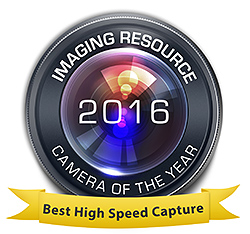
Thanks to the E-M1 Mark II's dual quad-core TruePic VIII image processor, the camera can just chew through the frames. Taking burst shooting a step further, the E-M1 II introduces a unique 'ProCapture' mode that will continuously buffer through a maximum of 14 frames as you half-press the shutter button. Then, you fire off your burst (either 18fps for "low" or 60fps for "high"), and you have a handy (and perhaps critical) 14-frame safety buffer for those very hard-to-anticipate moments.
The E-M1 Mark II's continuous autofocusing performance is also top-notch and significantly better than its predecessor's. In our testing, the E-M1 Mark II nailed focus on pretty much every shot of a 60+ frame burst sequence, with both 10fps and 18fps burst modes.
Given the Olympus E-M1 Mark II's compact size, the amount of performance this camera offers is incredible. It's quick, nimble and downright fast when it comes to capturing photos of fast-moving subjects. Just be sure to pack your high-speed, high-capacity memory cards!
Camera of Distinction, High Speed Capture: Sony RX100 V
High-speed capture is not a term typically associated with pocket-friendly cameras. With its RX100 Mark V, though, Sony throws convention out of the window, offering one of the best-performing cameras we've ever seen in a body that's small enough to slip into a pants pocket. And there it can remain, almost forgotten, right up until the moment you need it -- but once you pull it back out, you'll have performance on tap that would leave your DSLR or mirrorless camera in the weeds!
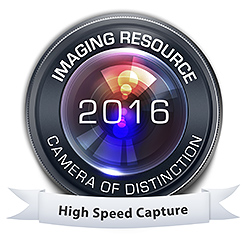
And we're not exaggerating here, either: Look at a professional DSLR from the likes of Canon and Nikon, and at best you'll see performance in the region of 12-16 frames per second. Yet somehow, the tiny little Sony RX100 V will rattle off a stunning 24 full-resolution frames every second, and still have time to adjust the focus between frames. And not only that, it'll do so while providing a burst depth of up to 150 frames in JPEG mode, and as many as 60 frames even in RAW+JPEG capture.
Frankly, it blows our minds that Sony was able to pack so much power into a camera so small as the RX100 V. About the only thing which held us back from awarding it top honors in the High Speed Capture category was simply that the Sony RX100 V has a rather short zoom lens, and that's not really the most conducive to sports photography, where all of this performance is a must. But if you can get close enough to your subjects to avoid the need for a longer zoom... Well, you're not going to find a camera that gives you more performance for your dollar (and your pocket space) than the incredible Sony RX100 V!
Camera of the Year, Most Unique Camera: Sigma sd Quattro
In a market where many cameras tend to blend together in both appearance and features, the Sigma sd Quattro stands out not only for its outward appearance, but also for its unique imaging pipeline. Powered by a Foveon sensor, the Sigma sd Quattro delivers distinctly sharp images. However, alongside its excellent resolving capabilities at low ISO, the sd Quattro also includes several quirks, earning it our Most Unique Camera of the Year award.

Frankly, the sd Quattro is nearly as distinct in use as it is in appearance. Lacking the video and wireless functionality you tend to find in today's enthusiast cameras, Sigma’s first-ever mirrorless interchangeable lens camera puts the emphasis squarely on image quality. In certain circumstances, this focus by the always adventurous Japanese manufacturer pays huge dividends as there isn’t a camera on the market for under $1,000 that offers anywhere near the resolving capabilities of the sd Quattro at low ISO.
The “Most Unique” Sigma sd Quattro stands alone in more ways than one. Sigma has created a camera that is not only very distinct in its class, but distinct in the entire camera market. Ultimately, if you're willing to work through its quirks, you’ll find a camera that can deliver incredible images.
Imaging Resource Camera of the Year Awards 2016

Best Overall
Best Professional and High-End Cameras
Best Enthusiast Cameras
Best Premium Compact, Intermediate and Entry-Level Cameras
Best Prime and Zoom Lenses, Technology and more! (current page)
